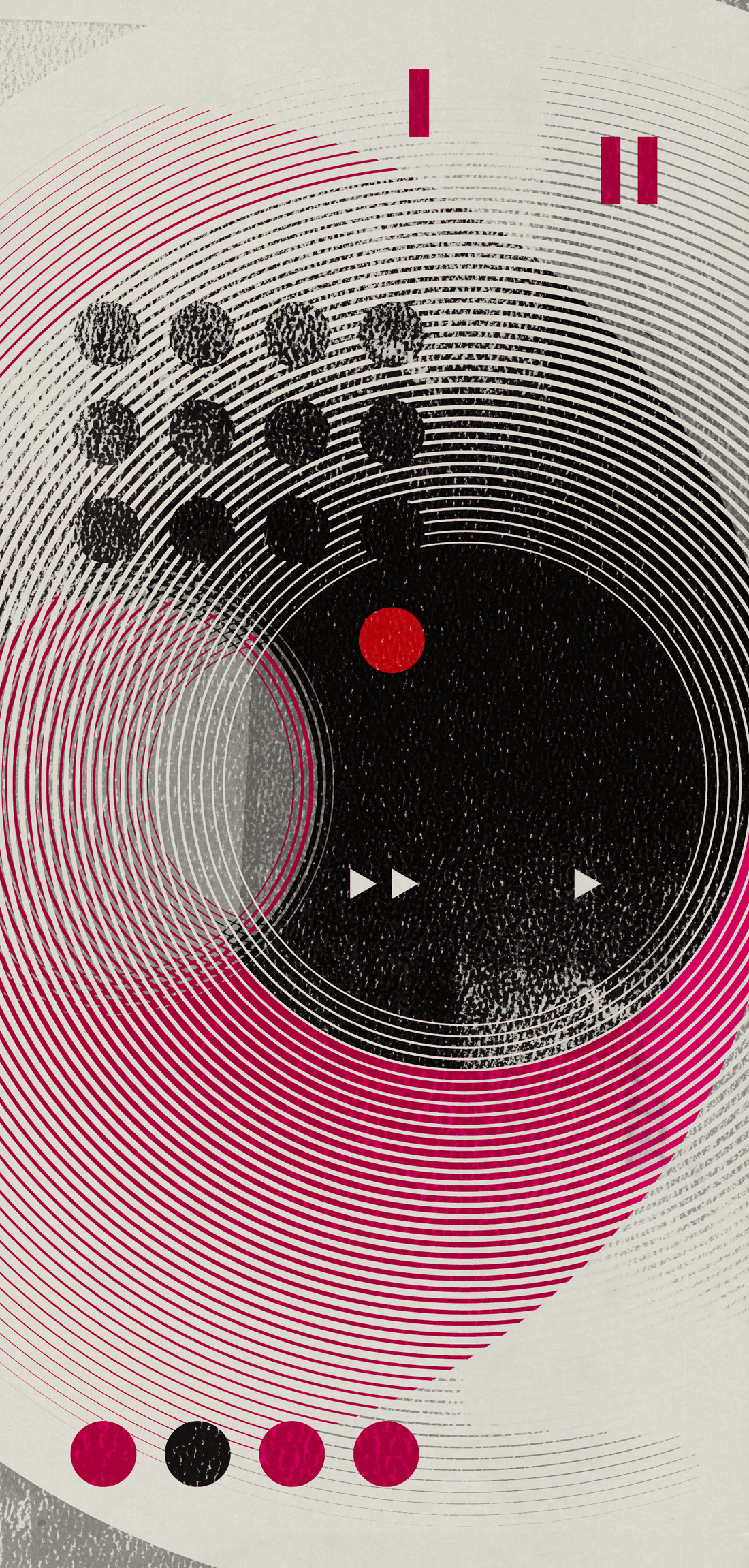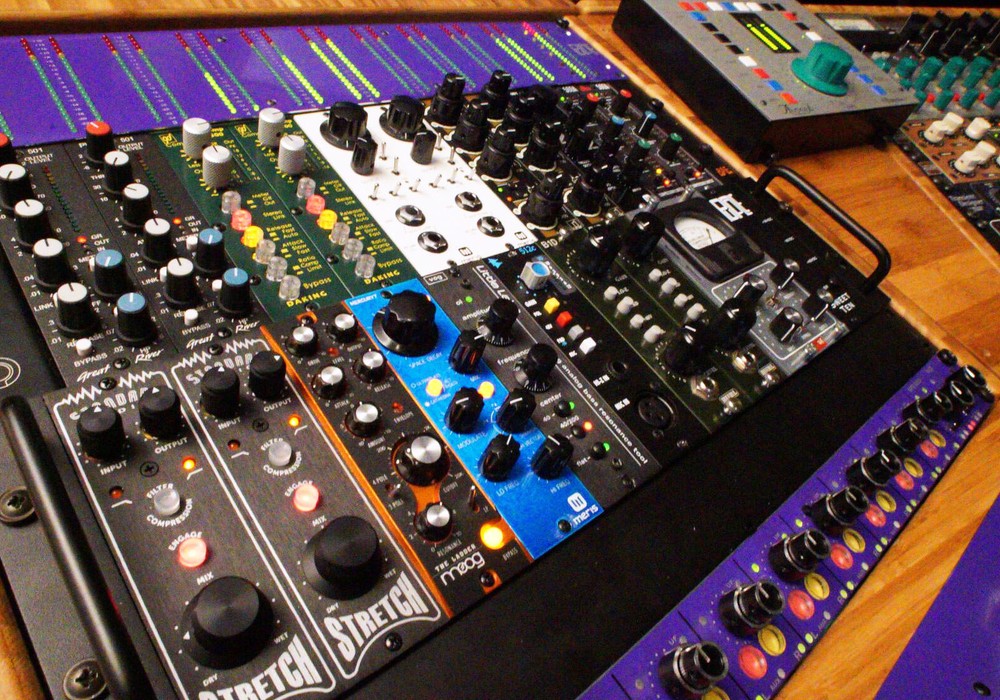I am sure I’m not alone here in my curiosity of Thermionic Culture products. The literal meaning of the company name, the not-just-free-from-digital but “free from solid-state additives” maxim, and if I’m being candid, the damn fine appearance of their products are all attention magnets in my world. Mix in the manufacturer’s tendency to exploit and encourage the use of distortion elements in several of their audio units as well as the impressive heritage of this UK-based company, and interest for new products from Thermionic is high. One of their latest offerings is a hand-wired, 12-channel, valve summing mixer with a selection of interesting processing functions for the main stereo bus — charmingly and appropriately entitled the Fat Bustard.
The input arrangements are four stereo pairs, four mono channels with panning capabilities, and two additional aux inputs without variable panning or level controls. It’s worth noting that in hooking up the Fat Bustard for use, the mains voltage is externally selectable between 115 and 230 volts, and all audio inputs and outputs are unbalanced XLRs wired as pin 2 hot, with pins 1 and 3 grounded — to save the need for special cabling. The Fat Bustard is not the only Thermionic product to feature unbalanced I/O, and unlike some folk, I personally don’t see this as a negative at all, as this unit is all about pure valve tone without the need for undesirable electronics or components messing with the sonics. Would you really want your all-tube mix-path going through balancing transformers or electronics — especially as what we have here is a unit that I’m sure for most would be a studio centerpiece and therefore does not have a need for lengthy audio cabling?
When face-to-face with the front panel of the Fat Bustard, you are confronted by a 4RU-height, stunning black unit with a host of vintage-style knobs, colorful switches, and a uniquely impressive pair of VU output meters. The uppermost left of the unit is populated by the four stereo input controls (channels 1-8), which feature unity gain when fully clockwise, and simple on/off switches below. Underneath is the second row of controls where you have the four mono input controls which have an identical level and mute setup as their stereo counterparts, with additional panning controls intuitively laid out one row below. The stereo channels have no facility for panning or to alter the stereo balance, whereas the mono channels have large associated pan pots, and switches to disengage the pots when required to send the mono channels to stereo center. The first thing I did when I got the Bustard set up was to send a stereo mix through channels 1 & 2 with all other channels and processing muted/bypassed to get a feel for the large rotary faders, which it has to be said are incredibly accurate and amazingly tactile — real sound-engineer stuff! You have to commend the overall build quality on this unit, as it really is very solid and sturdy in its construction. The two Aux inputs are intended as an interface for the Little Bustard (or other audio device) and simply have audio mutes and a single switch to send both auxes to center, where otherwise they would be Aux 1 and 2 to stereo left and right respectively. With the exception of the Master Balance and Stereo Output level, all other controls are designed for the purpose of processing the stereo mix, and this is where things get very interesting.
As a rapid succession to test-driving the rotary controls, I swiftly set about exploring the offerings of the always-active, attention-seeking Attitude control — an exploration that lasted pretty much the entire month I had this unit with me. The distortion figures for the Attitude control are quoted as going from the lowest setting of 1, which is equal to 0.015% at +8 dBm output, to Max (1 click above 5), which equates to 1%. Obviously, this varies on how hard the input levels/tubes are pushed but gives you a rough guideline as to how the various Attitude settings affect the audio passed through its circuitry, and I can’t think of a much better description or indeed title for the Attitude knob. Here is where I feel the real essence of the Fat Bustard lies and defines this unit’s raison d’êêtre. There are four very simple yet powerful parts to the EQ section: Bass Lift, Bass Cut, Top Lift, and Top Cut. Both Lift sections vary the shape of the shelving curve continuously the more you boost — at low settings starting in the midrange frequencies of 2 kHz and 800 Hz for Bass and Top respectively, and progressing to peaks at 50 Hz and 10 kHz. The Cut controls are stepped and start off as 6 dB per octave filters until you get to positions 4 to 6, where they morph into shelving filters. As with Pultec passive EQs, you can effectively scoop mids when using a combination of both the Lift and Cut controls.
Further to the EQ and Attitude parameters, there are two stereo image processors, which are very effective for their intended purpose, and both can be completely taken out of circuit. Firstly, there is a Stereo Spread control that begins with no processing at all when at 0, and when adjusted is able to very precisely widen the stereo spread of the Fat Bustard’s output with what sounds like raising the side level of an M/S signal. A further control is the Spread Filter which affects the spread control to either process all frequencies or process only the frequencies above 100 Hz, 250 Hz, or 3 kHz. The other stereo processor is a stepped Bass To Centre control, something which I can say I haven’t experienced since the days of attending vinyl-cutting sessions, when used to push the cutting level to absolute maximum. What have I been missing or overlooked? By effectively making the lower frequencies mono, you can really make the lows project with more power; of course as humans, we perceive low frequencies omnidirectionally, yet this control still works surprisingly well. You can in fact make the master output completely mono across all frequencies with the highest setting of the Bass to Centre pot. The combination of widening the stereo width at certain frequencies and being able to manipulate the lower frequencies to mono are very powerful tools to have in one’s arsenal and would no doubt add to the Fat Bustard’s potential as a very fine mastering device. Lastly, there is a mix-bus balance pot and a stepped output-level control for fine tuning the output signal.
I found a number of uses for the fat guy, and it has to be said, not all were in the role of a summing mixer. At which I hasten to add, as a summing amp, it is phenomenal; but be warned this Fat Bustard is a rock-and-roller and isn’t always kind to certain types of musical material. I discovered this when running some excessively punchy pop-dance mix stems through a selection of the channels and found even at the lowest Attitude setting that the transients on the receiving end suffered some abuse. Where it does shine however, is on rockier material where perhaps the drums aren’t at the forefront or overly punchy, and in fact as a sole summing amp for live drums and percussion, it works a treat and would be ideal as a side-car mixer for such duties. There is no doubt that a lot of dynamic squashing can go on when pushing the Fat Bustard and the Attitude control in particular, and it can be a beautiful thing when used on the right sources. The feel and response when using the unit as a summing mixer is definitely vintage and very much reminds me of ‘60s and ‘70s records, albeit with a wider, slightly cleaner character. The EQ is sublime and just so addictive that you can easily over-process, because it’s really that pleasing to the ear — and more powerful than the basic controls would suggest. In particular, for adding high-end shine without harshness, the Fat Bustard is the Don, and it’s well worth running a mix slightly dull on the top end to benefit from the character the Top Lift can bring to the party. I was quite prepared for the Fat Bustard in operation to be relatively noisy, but the specifications are to be believed, and the unit runs very quiet with all channels open and with masses of headroom — great for interfacing with digital gear. Even though some of the processing features could be considered as esoteric, the controls are extremely easy to use and intuitive.
It’s easy to become obsessed with processing individual tracks with the Fat Bustard, and I had great success running bass instruments and various synths through it and back into the DAW. What you get for your efforts is a thicker, meatier, dynamically “locked down” version of your audio back, especially when using the Bass to Centre process; the exact same scenario goes for enhancing guitars, pads, brass, vocals, and anything else you could possibly decide to throw its way. In taking the digital edge off mixes, the Fat Bustard is in its element, and I think if you’re producing Reggae, Disco, or Soul music, the Bustard will undoubtedly be invaluable and a faithful companion. I think as a unit to hook up a collection of analogue keyboards and synths for monitoring purposes, and in preparation for tracking such sources, the Fat Bustard could be the perfect piece. I love the fact that it can go from clean (although I wouldn’t run an orchestral piece through it) to really grungy sounding, and it always sounds beefy and somewhat elegant in the process. With some research, it’s easy to discover that the Thermionic guys are intensely passionate about their products and expertly knowledgeable in their selection of components and the complex world of valve technology, and I for one am going to become an inductee into the Thermionic Culture. ($4770 street; www.thermionicculture.com)
–Matt Foster, www.matt-f.co.uk
Consoles/Summing | No. 73
5088 Analogue Mixer
by Larry Crane, Doug McBride
To begin this review, I first must admit that this is the most expensive piece of recording equipment we have yet reviewed in Tape Op. It is also, outside of my home, the most expensive purchase I...





_disp_horizontal_bw.jpg)